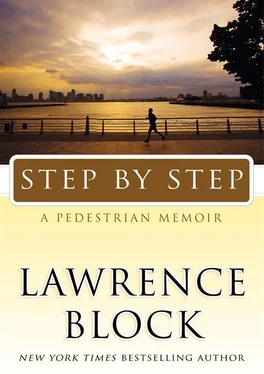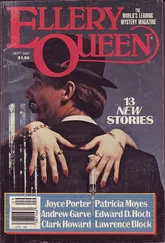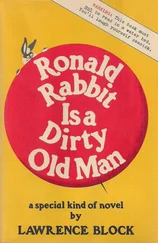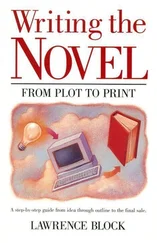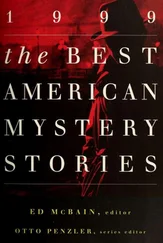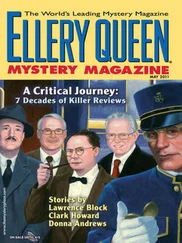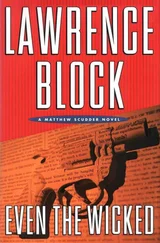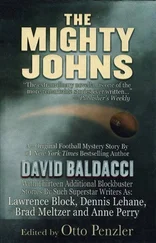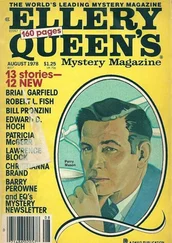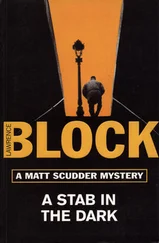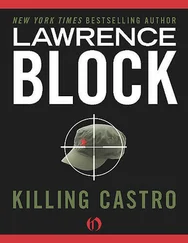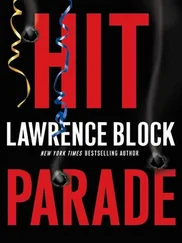Lawrence Block - Step by Step
Здесь есть возможность читать онлайн «Lawrence Block - Step by Step» весь текст электронной книги совершенно бесплатно (целиком полную версию без сокращений). В некоторых случаях можно слушать аудио, скачать через торрент в формате fb2 и присутствует краткое содержание. Год выпуска: 2009, ISBN: 2009, Издательство: William Morrow, Жанр: Биографии и Мемуары, Юмористические книги, на английском языке. Описание произведения, (предисловие) а так же отзывы посетителей доступны на портале библиотеки ЛибКат.
- Название:Step by Step
- Автор:
- Издательство:William Morrow
- Жанр:
- Год:2009
- ISBN:978-0-06-172181-6
- Рейтинг книги:3 / 5. Голосов: 1
-
Избранное:Добавить в избранное
- Отзывы:
-
Ваша оценка:
- 60
- 1
- 2
- 3
- 4
- 5
Step by Step: краткое содержание, описание и аннотация
Предлагаем к чтению аннотацию, описание, краткое содержание или предисловие (зависит от того, что написал сам автор книги «Step by Step»). Если вы не нашли необходимую информацию о книге — напишите в комментариях, мы постараемся отыскать её.
bestselling author comes a touching, insightful, and humorous memoir of an unlikely racewalker and world traveler.
Step by Step — читать онлайн бесплатно полную книгу (весь текст) целиком
Ниже представлен текст книги, разбитый по страницам. Система сохранения места последней прочитанной страницы, позволяет с удобством читать онлайн бесплатно книгу «Step by Step», без необходимости каждый раз заново искать на чём Вы остановились. Поставьте закладку, и сможете в любой момент перейти на страницу, на которой закончили чтение.
Интервал:
Закладка:
ACTIVITIES
When we weren’t walking or eating or sleeping, how did we pass the time?
I can’t say we watched much television. The refugios didn’t have sets, and neither did the budget hotels. Sometimes, though, we’d eat in a café with a TV set. Once we walked into a convenience store, the local equivalent of a 7-Eleven, and were startled to hear Peter Jennings; the French station Canal-Plus was carrying the ABC Evening News in English, and we stood there transfixed. And I’ve mentioned watching Eight Million Ways to Die in Basque country, where the locals seemed to be inventing a new way of their own every week or so.
But the program that always seemed to be playing when we were around was The Flintstones . I was never a big fan of the show when I could understand what Fred and Wilma were saying, and I can’t say it gained a lot in translation. The only other program I can recall was the Spanish equivalent of America’s Funniest Home Videos . We’d never watched it back home, and I don’t know that we’d have been watching it over there, either, if we’d had any choice.
But I could be wrong, because the Spanish version had something you’d never see in the States. Along with all the usual Stupid Pet Tricks and Rotten Little Kid Antics, they elected to show us this astonishing video of — I’m sorry, it’s more trouble than it’s worth to search for a polite way to say this — of a rabbit fucking a chicken.
All conversation stopped around us. Everyone stared at the screen, and then everyone roared with laughter and offered up verbal encouragement that didn’t require translation. “I hope you were paying close attention,” I told Lynne, “because you’re not going to see anything like that ever again.”
But I was wrong. At the end of the program the audience votes for their favorite, and of course the rabbit and chicken won, whereupon they gave us another look at it. And the next time we found ourselves in a room with a TV set was precisely a week later, so what program do you suppose was playing? And of course last week’s winner was entered again this time around, and of course the damn thing won. If the show’s still on the air, I would have to assume it’s still winning.
I hate to admit it, but I wouldn’t mind seeing it again...
What else did we do? Well, we did a little sightseeing, when there was a sight to see. And we spent time reading. Along with my regular attempts at getting the gist of the stories in El País, we plugged away at the few books we’d brought with us. The couple of novels didn’t last; we’d read and discarded them before we were out of France. But I’d packed a Bible, and neither of us was in danger of knocking that one off in a night or two. Nor were we likely to get all caught up in it, but it somehow seemed like the right sort of thing to dip into in the course of a journey like ours.
I’d also packed Chaim Potok’s History of the Jews, figuring it might counterbalance the undeniably Christian nature of our adventure. If I was going to tag along after St. Francis and St. Clare, and treat myself to a dip of holy water in every church along the way, the least I could do while I was at it was refresh my memory of the history of my own people.
This might be a good time to point out something about Lynne and myself. We were not so much a mixed marriage as a marriage of two rather mixed individuals. After a proper Catholic education at Ursuline Academy in New Orleans, she took a bus to New York, where she fell in with a crowd of artists. I was by no means the first nice Jewish boy in her life.
For my part, after my first marriage ended I found myself seeking out the church around the corner as a source of peace and quiet amid the Manhattan hubbub. In the books I wrote about ex-cop Matthew Scudder, I had him do much the same thing, and light memorial candles there for departed friends.
By the time we began keeping company, it would be fair to say that each of us was a little bit country and a little bit rock and roll. And the extent of our religious cross-pollination had become evident to us two years earlier, when some moron cut us off on an icy stretch of highway in northern New Mexico.
“Oy, gottenu!” cried the pride of St. Elizabeth’s. While the boy from Beth Zion said not a word while making the sign of the cross.
Well, it worked, didn’t it? We didn’t crash the car. And it happened just that way, swear to God. Whatever God you want...
Still, I figured Potok’s history would be a good choice, and I’d have to say it was, but it made for some curious moments. Everything was fine until I got up to the fifteenth century, and suddenly we couldn’t walk through a town without my reading that night how it had figured prominently in the Spanish Inquisition, with its synagogues sacked and its Jewish population burned alive.
Oh, well. All that aside, the book was good company. I was talking about it with Lynne, and we agreed that Potok was a good writer, and that we’d both enjoyed his novel, My Name Is Asher Lev, about a young artist from an ultra-Orthodox family. “And there was a sequel,” I said, “but I can’t remember what he called it.”
“ Now My Name Is Allen Lewis, ” said Lynne, without a moment’s hesitation.
WALKING
There were lots of good times, as I hope I’ve managed to suggest, and even the worst moments weren’t so bad once we’d had a day to walk away from them. And we didn’t lack for interesting ways to pass the time. But what we mostly did, and what was certainly the central feature of those months in Spain, was walk.
There are, as I’ve mentioned, people who make the trip on a bike. There are paths that you can’t negotiate on a bike, but there were always roads the bicycle pilgrims could take to get from one refugio to the next.
One contingent of Spanish equestrians covered a portion of the route — from León to Santiago, as I recall — mounted on horseback, and a fine figure they cut. If it had been up to me, I’d have cheerfully given them plenary indulgences, along with grain and water for their steeds.
There are also a certain number of sightseers every year who cover the route in a car, winding up in Santiago de Compostela in time for the festival. (I don’t suppose they call themselves peregrinos, or expect to cut short their time in Purgatory for having made the trip, but what do I know?) And some of the adventure travel companies have taken to offering escorted trips along the Camino, with a support vehicle to carry the luggage and a wuss wagon for those whose feet can’t take it, along with an abbreviated itinerary and some bus transportation over parts of the route.
Not that there’s anything wrong with that...
But here’s the thing. If you’re not going to walk, really, what’s the point?
There was something transformational in covering vast distances, true geographic expanses, on foot. Who looks at the map of Spain and sees a country it would be possible to walk across? And yet by the time we were done we had done precisely that, one day at a time, one precious step at a time.
I don’t think there was ever a day when we covered more than twenty miles, and that long stretch came in Castile, where there was an empty expanse of flat land through which the Camino headed north, toward León. We knew it was coming, and we made a point of getting an early start that day and carrying the requisite food and water. It was a long day’s walk — we generally seemed to average around three miles an hour, less over difficult terrain — but we got to the end of it without difficulty, and there was a refugio waiting for us.
As the miles piled up, they brought us a great sense of empowerment. For all our lives we’d had to rely on something other than ourselves in order to get from one place to another. Whether our transportation was public or private, whether we had to depend on a bus or a plane or were driving a car that we’d bought or rented, we were being moved around by something we didn’t really control. We weren’t going anywhere; the car or bus or plane was going somewhere, and we were hitching a ride in it.
Читать дальшеИнтервал:
Закладка:
Похожие книги на «Step by Step»
Представляем Вашему вниманию похожие книги на «Step by Step» списком для выбора. Мы отобрали схожую по названию и смыслу литературу в надежде предоставить читателям больше вариантов отыскать новые, интересные, ещё непрочитанные произведения.
Обсуждение, отзывы о книге «Step by Step» и просто собственные мнения читателей. Оставьте ваши комментарии, напишите, что Вы думаете о произведении, его смысле или главных героях. Укажите что конкретно понравилось, а что нет, и почему Вы так считаете.
